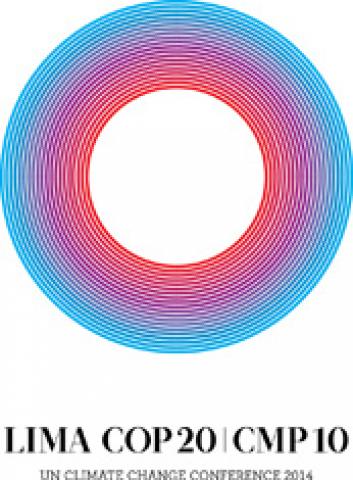
The following article was published in the November-December 2014 NewsNotes.
As the effects of climate change become more pronounced, the eyes of the world are on international negotiators as they prepare for the 20th Conference of Parties (COP20) of the United Nations Framework Convention on Climate Change (UNFCCC) to be held in Lima, Peru in early December. At the meeting they plan to draft an agreement on how the world will diminish the release of greenhouse gases and help poorer countries adapt to the changing climate. The agreement should be signed in Paris in December 2015 at a UN summit meeting of world leaders.
Many are focusing on the U.S. as a country that has been one of the principal stumbling blocks to achieving a legally binding treaty. Due to the fact that the U.S. Senate will not ratify such a treaty, as many of its members still deny that climate change is a reality, the Obama administration is proposing an agreement in Lima that would entail voluntary commitments from countries so as to avoid the required ratification by national legislatures. The proposal is derided by many developing countries that will experience the largest climate effects even though they contributed least to the problem.
The negotiating process has divided countries into two groups: “developed” and “developing” with the first group carrying heavy responsibilities to reduce greenhouse gas (GHG) emissions and the latter with minimal or no requirements. But large differences exist among those considered developing countries. It is difficult to equate “emerging” countries like China, India and Brazil with developing countries like Bangladesh, Liberia or Haiti. The emerging countries are currently large producers of GHGs, which is why many developed countries like the U.S. demand that these countries also be required to reduce GHG emissions. Yet this demand ignores the fact that a large percentage of the emissions from emerging economies are created in order to satisfy high levels of consumption in developed countries. The UN has estimated that approximately one-third of China’s emissions are from factories producing for export to the U.S. and Europe.
Approximately 15 to 20 countries, mostly in the bloc of developed countries, dominate the negotiations. The close to 200 smaller developing countries – the ones most vulnerable to the heaviest effects of climate change, though having emitted minimal amounts of GHGs – have little to no influence on the outcome of the negotiations. They have issued strong, though mostly ignored, demands for a legally binding treaty that requires dramatic reductions in GHG emissions from developed countries and large amounts of assistance to help them adapt to the changing climate.
“Without an international agreement that binds us, it’s impossible for us to address the threats of climate change,” said Richard Muyungi, a climate negotiator for Tanzania. “We are not as capable as the U.S. of facing this problem, and historically we don’t have as much responsibility. What we need is just one thing: Let the U.S. ratify the agreement. If they ratify the agreement, it will trigger action across the world.”
It is understandable that these countries, especially the small island countries that may actually disappear due to rising sea levels, want a legally binding treaty. It is debatable, however, if that would be effective as there is no way, in the present political climate, that the required two-thirds of the U.S. Senate would be able to ratify it, leaving one of the principal emitters of GHGs out of the agreement.
“To sidestep that requirement [for ratification by the Senate],” writes New York Times’ Coral Davenport, “President Obama’s climate negotiators are devising what they call a ‘politically binding’ deal that would ‘name and shame’ countries into cutting their emissions. The deal is likely to face strong objections from Republicans on Capitol Hill and from poor countries around the world, but negotiators say it may be the only realistic path.”
With this proposal, countries “would be legally required to enact domestic climate change policies — but would voluntarily pledge to specific levels of emissions cuts and to channel money to poor countries to help them adapt to climate change,” according to Davenport. “Countries might then be legally obligated to report their progress toward meeting those pledges at meetings held to identify those nations that did not meet their cuts.”
While this proposal is concerning to many, one positive aspect of the negotiations is the increasing participation of civil society. In Peru it will be the first time in the history of these meetings that there will be a real and effective presence of indigenous peoples. They are becoming increasingly organized on an international level as could be seen in their preparatory meeting for Lima in mid-October. They will focus heavily on preserving forests as an important way to mitigate the effects of climate change. International social movements will host a parallel event to the COP20, the Peoples’ Summit on Climate Change, which hopes to bring the voice of millions of people around the world that want strong measures to be taken in Lima.
Unfortunately, with such vast differences between countries any agreement will be difficult to achieve. While the U.S. proposal for a non-binding treaty may be the only politically possible result, this may not be enough to avoid the devastating effects of climate change, especially in those countries with almost no voice in the process.
